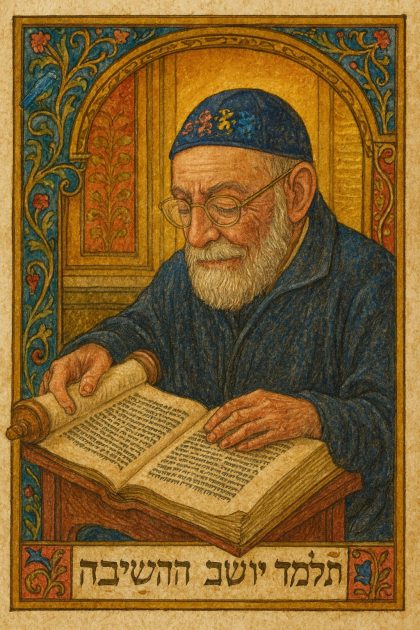Mabon and the Harvest Moon
Sunday gratefuls: Mother Earth. Talmud Torah. Bagels. Cream Cheese. Rosemary bagels. The Morning Service. Kabbalah. Nefesh. Ruach. Neshama. Robbintson, Maine. Shorewood. The Twin Cities. Homes of the Ancient Brothers. Rocky Mountains. Wild Neighbors. The Bears in hyperphagia, getting fat. Elk Bulls, rutting and locking horns. Mule Deer Bucks, too. All timing for optimal Spring time emergence. Clear Colorado Blue Skies. Puffy Cumuli.
Sparks of Joy and Awe: Clouds and the Water Cycle
Life Kavannah: Wu Wei
Week Kavannah: Ometz Lev. Courage of the heart.
Tarot: paused
One brief shining: Steve Horowitz worked the bagel slicer, sesame seeds dropping to the table, while others passed out paper plates, napkins, and a kitchen knife for the schmear; Cassie reached up behind her and pulled maroon Tanakhs and Siddurs to pass around while Jamie fiddled with his computer so our Canadian friend Bev could join for our study of Bereshit, the first parsha in the Torah cycle.
 Torah study (Talmud Torah): Since seminary, I’ve loved serious study of the Bible, both what I once knew as the Old and New Testaments, and now Tanakh, which contains the Torah (which means learnings), the Prophets, and the Writings.
Torah study (Talmud Torah): Since seminary, I’ve loved serious study of the Bible, both what I once knew as the Old and New Testaments, and now Tanakh, which contains the Torah (which means learnings), the Prophets, and the Writings.
Why do I love this? Not always sure. I used to enjoy the exegetical methods of higher criticism which used language (Hebrew, Greek, Aramaic), textual analysis, understanding of traditional forms like the blessing and the curse, historical background, and even how a text had been understood in the past to reach a best sense of what a text meant to the people who wrote it. The real “meaning” of the text. As close to the presumed true understanding of the text as we could get.
Now though in study of the Torah I have encountered a more ancient way of using the biblical text. Jews do not hunt for the real meaning of a text, do not seek a singular truth as it must have been understood, rather we seek a particular understanding for this day, this moment.
We read the Torah in parshas, often several chapters long and divided so the whole Torah can be read in one year, parshas that have been read and reread for over three thousand years, so many truths.
Jews view the Torah through the prism of language, sure, but they also view it through the prism of interpretations called midrash, the understandings of Rabbis collected throughout the centuries. And midrash is not finished. Each Jew is expected to bring their own mind and heart to understanding the text.
Different ways of reading a text are not only expected, but celebrated. Two Jews, three opinions. There is no truth, no fixed meaning to be found, only encounters with the text on a particular day, by particular people seeking their truth, for that day, for that text. And when the creation story(s) come up again, as they do right now in the Jewish liturgical year we may understand the majestic and orderly first creation story, “In the beginning…” (bereshit), in a way very different from the way we understood it last year.
